So now that you have seen it…

2016 MX5 Chassis
What does it all mean? The above picture gave us some great views into what the car is going to be like from a performance standpoint.
The obvious thing is the motor,a 2.0 Skyactiv engine with a decent looking header(ala the rest of the skyactiv models which have the cool looking scavenging headers). There are more subtle details like how compact Mazda made the alternator/A/C compressor and throttle body location. Mazda really hugged the block with them which makes me wonder how tight the engine bay will be in the production car.
You can see that Mazda is going with electric power steering which is built into the rack which is great, it keeps the weight low in the chassis and there is no power steering pump or lines to mess with. If Mazda has the feedback setup like they do in the Mazda 2 which also uses electric assist this will be an incredible car with feedback through the steering.
If you look at the current MX5 chassis below you can see one of the similarities from the one above.

2014 MX5 Chassis
The rear suspension looks similar to the current MX5 but there are several subtle changes to make things better. #1 look how the rear shock mounts to the new upper arm compared to the lower location on the older model. This makes for a smaller/lighter shock and a stronger control arm. The 4 bolt hubs and brake rotors are a move obvious difference which is saving weight too. The last piece that come across as different is the PPF (power plant frame), the current generation is pretty narrow and the new version is much wider, much like the older FD Rx7s where is wraps around the transmission and differential more. I’m sure Mazda spent the equivalent of months testing out the design difference in that piece alone to meet the requirements of the Skyactiv chassis.
I am still excited for the new chassis but I am bummed there is no turbocharger sitting on the motor but if Mazda can get us 200 wheel HP I will be happy! We shall see.
-Derrick


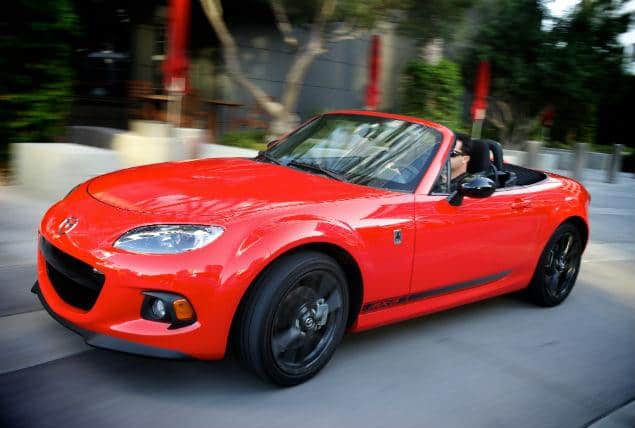




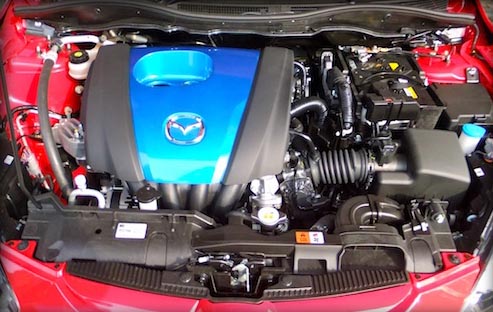

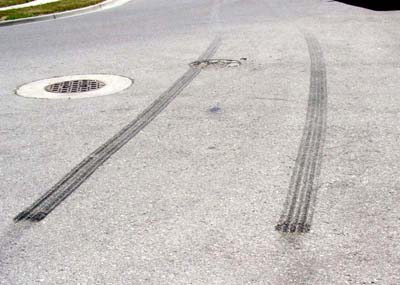



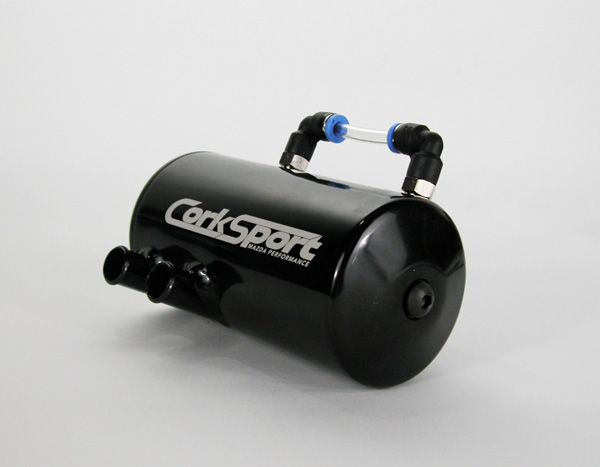
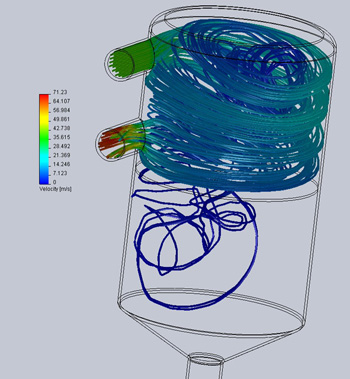 Unlike other catch cans on the market that simply expect the contaminates to fall out of the PCV vapors, our newly released oil catch can has a unique cyclonic vacuum design that forces contaminants to the walls of the can before the air can move back into the intake system. This Solidworks simulation shows how the system was designed. You can see that the air swirls around the outside of the can trapping the contaminants at the wall. This allows them to fall through a disk that is welded between two chambers used to separate the PCV vapors and the contaminants. Once the contaminants are separated you can view them with a sight tube located on the side of the catch can.
Unlike other catch cans on the market that simply expect the contaminates to fall out of the PCV vapors, our newly released oil catch can has a unique cyclonic vacuum design that forces contaminants to the walls of the can before the air can move back into the intake system. This Solidworks simulation shows how the system was designed. You can see that the air swirls around the outside of the can trapping the contaminants at the wall. This allows them to fall through a disk that is welded between two chambers used to separate the PCV vapors and the contaminants. Once the contaminants are separated you can view them with a sight tube located on the side of the catch can.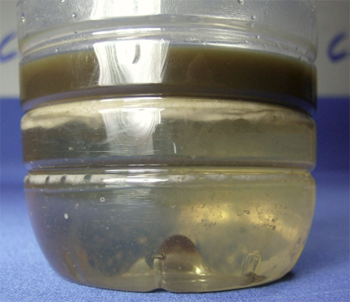 We were particularly surprised to see how much water vapor builds up in the crank case of these cars. After a few miles of driving with the catch can on our shop Mazdaspeed 3, we could really see what separates our catch can from the competition. After only 500 miles we had separated out a great deal of contaminants from the PCV system. Most of which was water vapor that had been trapped in the PCV lines and engine block. This alone should ensure that oil doesn’t break down quickly on our DISI MZR engine.
We were particularly surprised to see how much water vapor builds up in the crank case of these cars. After a few miles of driving with the catch can on our shop Mazdaspeed 3, we could really see what separates our catch can from the competition. After only 500 miles we had separated out a great deal of contaminants from the PCV system. Most of which was water vapor that had been trapped in the PCV lines and engine block. This alone should ensure that oil doesn’t break down quickly on our DISI MZR engine.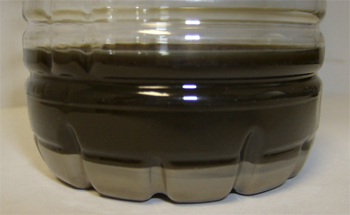 As you can see from the picture this is something you don’t want getting back into your engine. We took this sample and sent it out for particulate analysis. The results really prove that you don’t want this in your engine. Along with a large amount of oil, which can be seen, there was metal and water present in the oil. All of which we don’t want to be reburned in our engine or stuck to the back of our valves.
As you can see from the picture this is something you don’t want getting back into your engine. We took this sample and sent it out for particulate analysis. The results really prove that you don’t want this in your engine. Along with a large amount of oil, which can be seen, there was metal and water present in the oil. All of which we don’t want to be reburned in our engine or stuck to the back of our valves. Even though it took a little longer than we expected to release this, I’m sure everyone will agree that there are certain things you want done right and somethings are worth the wait. When it comes down to it there are just some contaminants that you never want entering your motor. Most of them are listed on the sheet to the right.
Even though it took a little longer than we expected to release this, I’m sure everyone will agree that there are certain things you want done right and somethings are worth the wait. When it comes down to it there are just some contaminants that you never want entering your motor. Most of them are listed on the sheet to the right.